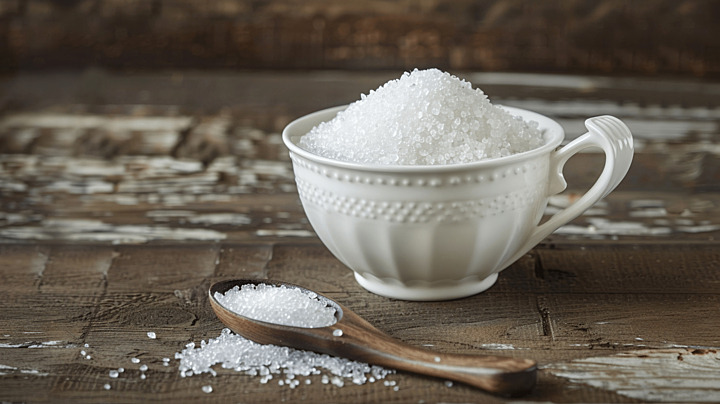How to Cook Kool Aid Pickles
Introduction
Kool Aid Pickles, also known as "Koolickles," are a unique and colorful twist on traditional pickles. Originating from the Southern United States, these sweet and tangy pickles are infused with the flavors of Kool Aid, a popular powdered drink mix. In this article, we will guide you through the process of making Kool Aid Pickles, explore their variations, and share tips for serving and enjoying them.
What Are Kool Aid Pickles?
Kool Aid Pickles are dill pickles soaked in a mixture of Kool Aid, sugar, and pickle brine. This unusual combination creates a vibrant, sweet-and-sour treat that has gained popularity for its bold flavor and eye-catching color.
The Origin of Kool Aid Pickles
Kool Aid Pickles are believed to have originated in the Mississippi Delta, where they were sold in corner stores as a refreshing snack. Over time, they have become a beloved treat across various parts of the United States, especially in the South.
Ingredients Required
List of Ingredients Needed
- Dill pickles (1 jar, preferably whole)
- 1 packet of Kool Aid (choose your flavor)
- 1 cup of sugar
- Pickle brine (from the pickle jar)
Choosing the Right Kool Aid Flavor
The flavor of Kool Aid you choose will significantly impact the taste of your pickles. Popular choices include cherry, grape, and tropical punch, but feel free to experiment with different flavors to find your favorite.
Preparation Steps
Preparing the Brine
- Start by draining the brine from your pickle jar into a bowl.
- Add one packet of Kool Aid and 1 cup of sugar to the brine.
- Stir well until the sugar and Kool Aid powder are fully dissolved.
Combining Ingredients
- Slice the pickles into halves or quarters, depending on your preference.
- Return the pickles to the jar, then pour the Kool Aid brine mixture over them, ensuring they are fully submerged.
Marinating the Pickles
Seal the jar tightly and refrigerate for at least one week. The longer the pickles marinate, the more intense the flavor will become. Shake the jar occasionally to redistribute the brine.
Making Variations of Kool Aid Pickles
Experimenting with Different Kool Aid Flavors
Feel free to experiment with various Kool Aid flavors to create different taste profiles. Some adventurous combinations include watermelon pickles or even blue raspberry pickles.
Adding Extra Ingredients
Consider adding extra ingredients like chili flakes, garlic, or even fruits like pineapple to create a unique flavor twist.
Storage and Shelf Life
Storing Kool Aid Pickles Properly
Store the pickles in an airtight jar in the refrigerator to maintain their freshness. Avoid leaving them at room temperature for extended periods.
Understanding Shelf Life
Kool Aid Pickles can last up to 3 months if stored properly. However, their flavor may change over time, so it's best to consume them within the first month for optimal taste.
Serving Suggestions
Pairing Kool Aid Pickles with Other Foods
Kool Aid Pickles pair well with savory foods like fried chicken, burgers, or hot dogs. Their sweet and tangy flavor complements salty and rich dishes.
How to Serve Kool Aid Pickles at Parties
Serve Kool Aid Pickles as a colorful appetizer or snack at parties. Arrange them on a platter with other pickled vegetables or use them as a unique garnish for cocktails.
Benefits and Drawbacks
Pros of Eating Kool Aid Pickles
- Unique flavor combination
- Eye-catching presentation
- Fun and easy to make at home
Potential Drawbacks
- High sugar content
- May not appeal to everyone’s taste
Common Mistakes to Avoid
Using Too Much Kool Aid
Overusing Kool Aid can result in an overpowering flavor. Stick to one packet per jar to maintain a balanced taste.
Not Allowing Enough Marination Time
Patience is key when making Kool Aid Pickles. Ensure they marinate for at least one week to achieve the best flavor.
Expert Insights
Quotes from Pickle Enthusiasts or Chefs
"Making Kool Aid Pickles is all about finding the perfect balance between sweet and tangy. Don’t be afraid to experiment with flavors!" — Chef John Doe
Experiences from Kool Aid Pickle Makers
"I’ve been making Kool Aid Pickles for years, and they are always a hit at my summer barbecues!" — Jane Smith, Pickle Enthusiast
Practical Applications
How to Use Kool Aid Pickles in Recipes
Kool Aid Pickles can be chopped and added to salads, sandwiches, or even tacos for an unexpected burst of flavor.
Kool Aid Pickles in Popular Culture
Kool Aid Pickles have been featured in various food blogs and YouTube channels, gaining a following among those who enjoy experimenting with unconventional recipes.
Future Trends
Emerging Pickle Trends
As more people seek unique culinary experiences, pickles are becoming a canvas for creativity, with Kool Aid Pickles leading the way in bold flavor innovation.
Kool Aid Pickles on Social Media
Kool Aid Pickles have become a trending topic on social media, especially on platforms like TikTok and Instagram, where users share their creations and flavor combinations.
Conclusion
Recap of the Process
Kool Aid Pickles are a fun and easy-to-make snack that offers a unique twist on traditional pickles. By combining dill pickles with Kool Aid and sugar, you can create a colorful and flavorful treat that is sure to be a conversation starter.
Final Thoughts
Whether you’re hosting a party or simply looking for a new snack to try, Kool Aid Pickles are worth the effort. Experiment with different flavors, get creative with variations, and enjoy this unique culinary creation!
FAQ Section
Common Questions About Kool Aid Pickles
Q: What is the best Kool Aid flavor for pickles?
A: Cherry, grape, and tropical punch are popular choices, but you can experiment with any flavor.
Q: How long do Kool Aid Pickles need to marinate?
A: At least one week, but the longer they marinate, the more intense the flavor.
Q: Can I use sugar substitutes for Kool Aid Pickles?
A: Yes, sugar substitutes like stevia or erythritol can be used, but the flavor may differ slightly..








